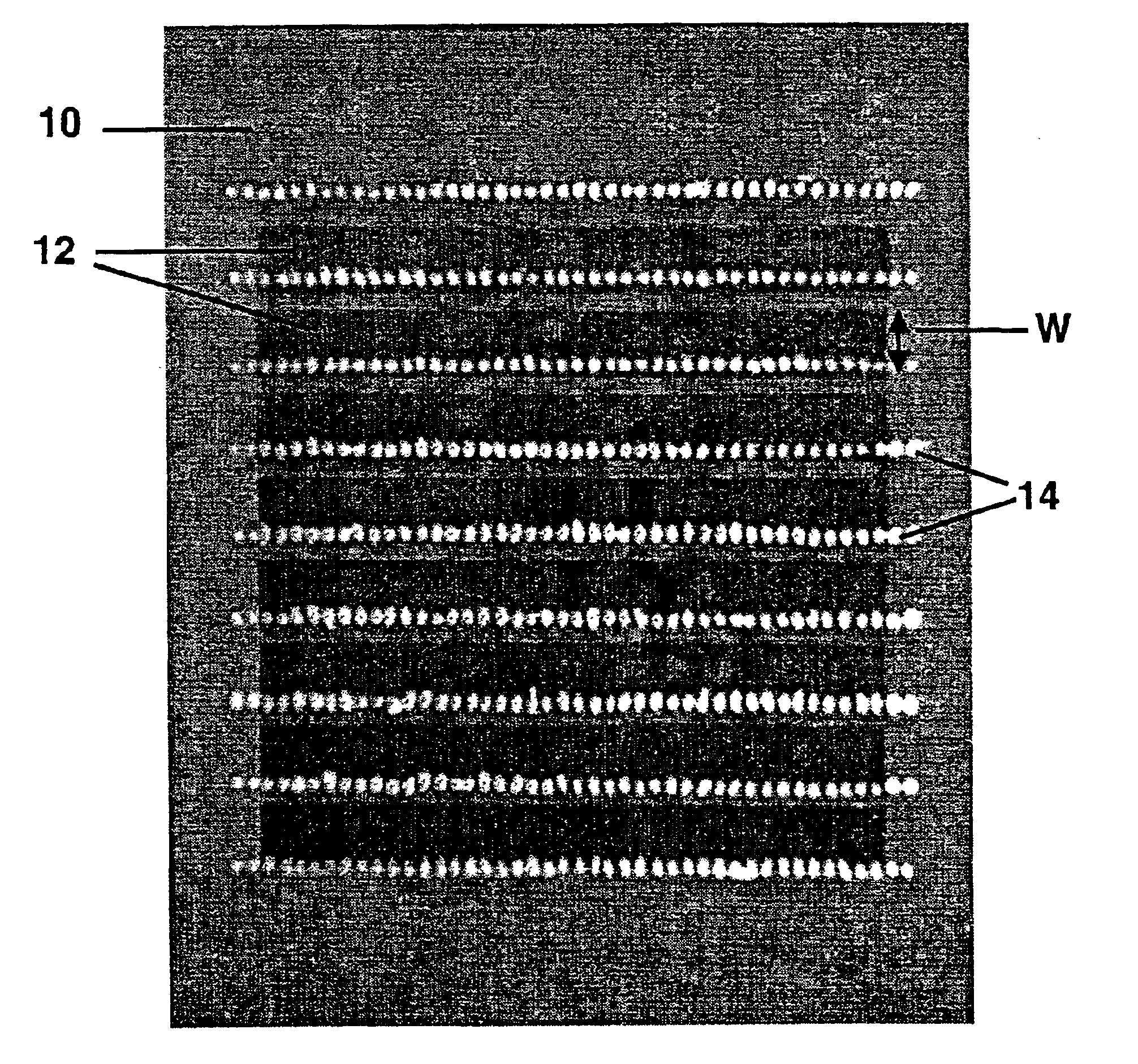High performance solid electrolyte fuel cells
- Summary
- Abstract
- Description
- Claims
- Application Information
AI Technical Summary
Benefits of technology
Problems solved by technology
Method used
Image
Examples
Example
EXAMPLE 1
Electrolyte Sheet Preparation
An electrolyte sheet for an electrode / electrolyte element useful for fuel cell fabrication is first provided. That electrolyte consists of a strong sheet of sintered zirconia—3 mole % yttria ceramic, the sheet having a thickness of about 20 microns and being about 4 cm by 8 cm in size.
For this example, optional roughened surfaces are provided on the electrolyte sheet to improve adhesion and reduce electrolyte / electrode interfacial resistance for the electrodes subsequently to be applied. The roughened surfaces are provided by applying rough nano-crystalline surface layers to opposing surfaces of the electrolyte. Application is carried out by tape casting a ceramic slip onto each of the opposing surfaces of the sheet, followed by drying and then firing.
The ceramic slip used to apply the surface layers is a fluid suspension of yttria-partially stabilized zirconia in an alcohol-based vehicle containing a plasticizer and powder binder. The slip is p...
Example
EXAMPLE 2
Electrode Application
Palladium-silver alloy electrodes of various compositions are applied to opposing surfaces of sample electrolyte sheets prepared as described in Example 1 above. The general procedure employed involves depositing electrodes 2.5 cm by 1 cm in area on opposite sides of the electrolyte sheet. The electrodes are applied by screen printing from printing mixtures comprising palladium-silver alloy powders and ceramic powder stabilizers combined in a conventional screen printing vehicle.
The vehicle contains TEXANOL® solvent from the Eastman Chemical Co. Kingsport, Tenn., ethyl cellulose T100 polymer from Hercules Aqualon, Hercules Incorporated, Houston, Tex., BYK-354 leveling agent from BYK-Chemie, Wesel, Germany, Anti-Terra 202 dispersant also from BYK-Chemie, and Hypermer LP4 dispersant from ICI Americas, Inc., Wilmington, Del. The solids component of the screen printing mixture consists of an alloy / ceramic powder mixture containing a 90 wt % silver / 10 wt % p...
Example
EXAMPLE 3
Fuel Cell Electrode Performance Testing
Impedance spectroscopy is used to study the interface resistance in air of selected-fuel cell electrode pairs provided in accordance with Example 2 above. Measurements involve 4-point, two-electrode measurements at applied voltages of 20 mV in the frequency range from 1 MHz to 0.1 Hz using Solartron 1260 impedance measurement equipment. Silver wires are attached to the electrodes using a silver palladium paste. In each case, the electrode interface resistance, Ri, is taken as the difference between the low and high frequency intercepts with the real axis on a Nyquist impedance plot.
Impedance spectra are first taken from a symmetric sample incorporating opposing 10 μm electrodes of 90 / 10 / 47 composition on electrolyte sheet prepared as in Example 1. An interface resistance of 0.1 ohm-cm2 on testing at 725° C. in air is recorded. This exceptionally low interface resistance is important for achieving high power densities (>0.5 W / cm2) in so...
PUM
 Login to View More
Login to View More Abstract
Description
Claims
Application Information
 Login to View More
Login to View More - R&D
- Intellectual Property
- Life Sciences
- Materials
- Tech Scout
- Unparalleled Data Quality
- Higher Quality Content
- 60% Fewer Hallucinations
Browse by: Latest US Patents, China's latest patents, Technical Efficacy Thesaurus, Application Domain, Technology Topic, Popular Technical Reports.
© 2025 PatSnap. All rights reserved.Legal|Privacy policy|Modern Slavery Act Transparency Statement|Sitemap|About US| Contact US: help@patsnap.com



